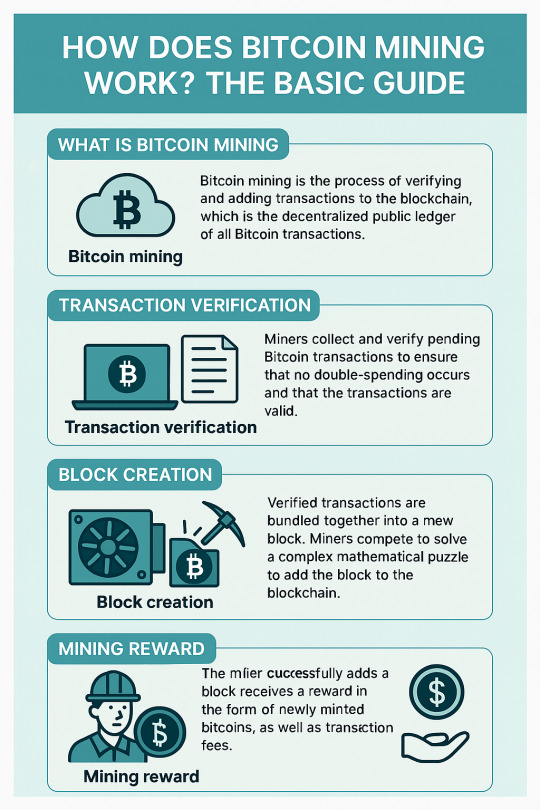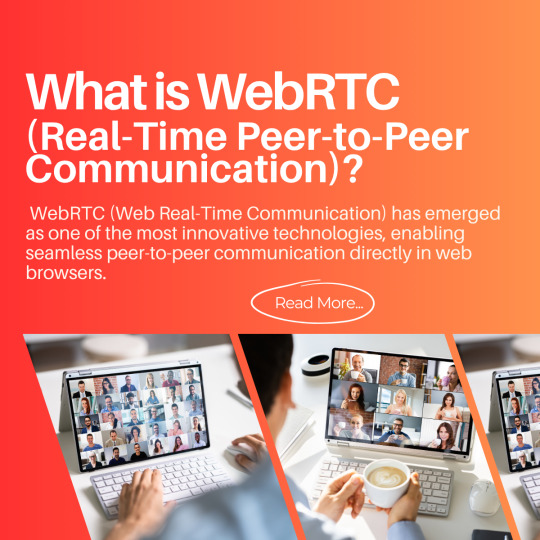#Web Technology
Explore tagged Tumblr posts
Text
Welcome to InnovateHub TechTalk: Unleashing the Tech Frontier
Greetings, fellow tech enthusiasts, and welcome to the inaugural edition of InnovateHub TechTalk! I am Lucas Redford, your guide on this thrilling expedition into the boundless realms of technology. With each keystroke and pixel, we'll embark on a journey to unravel the mysteries, embrace the innovations, and discuss the trends that shape our digital world.
Charting New Horizons:
In the age of rapid technological advancement, it's impossible to ignore the transformative impact that technology has on our lives. From the moment we wake up to the time we rest our heads, technology surrounds us, empowering, entertaining, and evolving at an unprecedented pace.
Our Quest:
At InnovateHub TechTalk, our mission is simple yet profound: to ignite your curiosity and keep you informed about the dynamic world of technology. Whether you're a seasoned coder, a budding entrepreneur, a digital artist, or just someone intrigued by the possibilities, this platform is your haven.
What Awaits You:
As we embark on this voyage together, here's a glimpse of what you can expect from InnovateHub TechTalk:
Innovative Spotlights: Venture into the heart of innovation as we showcase groundbreaking technologies and inventions that are reshaping industries and society.
Tech Chats with Experts: Join me in engaging conversations with thought leaders, industry experts, and visionaries who are shaping the course of technology.
CodeCraft Corner: Whether you're a coding novice or a seasoned pro, our CodeCraft Corner will be your source for coding tips, projects, and insights to elevate your programming prowess.
FutureTalk: Delve into the crystal ball as we discuss emerging trends, speculative tech, and the potential future landscapes that await us.
Be a Part of the Conversation:
InnovateHub TechTalk is not just a blog; it's a community. Your thoughts, questions, and insights are the catalysts that will drive our discussions forward. Don't hesitate to jump into the comment section, share your perspectives, and connect with fellow tech aficionados.
With great excitement, I invite you to journey with me through the digital maze, the electronic wonderland, and the data-driven universe that defines our age. Together, we'll decode complexities, celebrate achievements, and ponder the limitless possibilities that lie ahead.
As we dive into the sea of 1s and 0s, remember that innovation knows no bounds, and at InnovateHub TechTalk, we're poised to explore it all.
Welcome aboard, tech voyagers!
Lucas Redford
Founder and Chief Explorer, InnovateHub TechTalk
#Technology Trends#Innovation Insights#Tech Enthusiasts#Digital Exploration#Future of Tech#Coding Tips#Emerging Technologies#Tech Conversations#User Experience Design#Digital Transformation#Artificial Intelligence#Internet of Things#Cybersecurity#Software Development#Gadgets and Devices#Web Technology#Virtual Reality#Blockchain#Tech News Updates#Data Privacy#Cloud Computing#Tech Industry#Online Innovation#Science and Technology#Technology Community#Tech Insights#Cutting-Edge Tech#Digital Evolution#Innovation Spotlight#Technology Exploration
2 notes
·
View notes
Text
Yeah I used to also hate on WEBP, but turns out it is a great format.
https://www.svgator.com/blog/gif-vs-png-jpeg-webp-image-formats-guide/
We do have an issue with wide adaption of it in systems / softwares, making it hard to use. But the onus is not on the format, which is great.
Like, if you save images as PNG, because JPEG compression "ruins" them in ways imperceptible to most people... but save animations as GIF... you need to look into WEBP animation (cf above link).
Also saw someone say that SVG is useless too... SVG, the vectorial format? How big does your PNG need to be, to scale at different sizes? Does it scale well on web pages / apps? Print, even?
(starts frothing about photograph sizes and praising JPEG)
me when i meet the person who created webp files

#image technology#web technology#sureyd talk#sureyd reblog#WebP#Just because you have space doesn't mean you should abuse it
98K notes
·
View notes
Text

#my media#emo#emocore#2000s emo#punk#punkcore#2000s#2000s punk#scene#2000s scene#tech#catcore#cats#technology#y2k#y2k tech#y2k nostalgia#y2k aesthetic#2000s nostalgia#webcore#liminal#old internet#cybercore#old web#2000s alternative#emo boy#ipod#weirdcore
27K notes
·
View notes
Text
How Does Bitcoin Mining Work? The Basic Guide
Bitcoin mining is a foundational process in the world of cryptocurrency. It plays a critical role in maintaining the integrity of the Bitcoin network, enabling transactions, and introducing new bitcoins into circulation. For anyone looking to understand how Bitcoin functions or even considering mining as a potential pursuit, understanding its underlying mechanisms is essential. This guide breaks down Bitcoin mining in a simple and comprehensive way.
What is Bitcoin Mining?
Bitcoin mining is the process of validating and recording transactions on the Bitcoin blockchain, a decentralized public ledger. Miners use specialized hardware to solve complex mathematical problems. When a problem is solved, the miner adds a new block of transactions to the blockchain and is rewarded with newly minted bitcoins and transaction fees.
Why Is Mining Necessary?
Mining serves several essential functions:
Validation of Transactions: It ensures that every transaction is legitimate and prevents double-spending.
Decentralization: Because mining is done by many users worldwide, it helps keep the Bitcoin network decentralized.
Issuance of New Bitcoins: It introduces new bitcoins into circulation at a controlled and predictable rate.

How Does Bitcoin Mining Work?
The process involves several key steps:
Transaction Verification: When people send bitcoins, those transactions are grouped into a "block." Each block can contain thousands of transactions.
Hashing Function: Miners take the block's data and run it through a cryptographic function called SHA-256, generating a fixed-length string of numbers and letters known as a hash.
Proof of Work: Miners must find a hash that meets a specific condition (i.e., starts with a certain number of zeros). This requires changing a small piece of data in the block (called a nonce) repeatedly and rehashing until the condition is met.
Block Addition: When a miner successfully finds a valid hash, the block is broadcast to the network and verified by other nodes. If accepted, it is added to the blockchain.
Reward Distribution: The successful miner receives a reward in bitcoins, known as the block reward, along with transaction fees from the included transactions.
Equipment Used in Mining
Initially, mining could be done using ordinary computers (CPUs). As difficulty increased, miners switched to:
GPUs (Graphics Processing Units): More efficient than CPUs for parallel processing.
FPGAs (Field-Programmable Gate Arrays): Hardware configured for mining tasks.
ASICs (Application-Specific Integrated Circuits): The most powerful and efficient hardware designed specifically for Bitcoin mining.
Mining Pools
Due to the increasing difficulty of mining and competition, most miners join mining pools. A mining pool is a group of miners who combine their computational power to increase their chances of solving a block. Rewards are distributed proportionally based on the amount of computing power each miner contributes.
Bitcoin Mining Difficulty
Mining difficulty is a measure of how hard it is to find a valid hash. This difficulty adjusts every 2016 blocks (approximately every two weeks) to ensure blocks are mined roughly every 10 minutes. If blocks are being mined too quickly, the difficulty increases; if too slowly, it decreases.
Bitcoin Halving
Approximately every four years, the block reward is halved in an event known as Bitcoin halving. This reduces the number of new bitcoins issued and helps control inflation. Initially, the reward was 50 BTC; as of 2024, it's 3.125 BTC per block.
Environmental Impact
Bitcoin mining consumes a significant amount of electricity, leading to concerns about its environmental impact. Some solutions include:
Using renewable energy sources.
Transitioning to more energy-efficient equipment.
Encouraging innovations in sustainable mining practices.
Is Bitcoin Mining Profitable?
Profitability depends on several factors:
Electricity Costs: Mining is energy-intensive, and lower electricity rates lead to higher profits.
Mining Hardware: More efficient ASICs reduce power consumption and increase output.
Bitcoin Price: Higher prices make mining more lucrative.
Network Difficulty: Increased difficulty can reduce the chances of earning rewards.
Risks Involved
Volatility: Bitcoin's price is highly volatile, affecting profitability.
Regulatory Changes: Governments may impose restrictions or bans on mining.
Hardware Obsolescence: Rapid advancements in technology can render current hardware obsolete.
Future of Bitcoin Mining
As Bitcoin continues to grow, mining will evolve:
Greater use of green energy.
Advancements in chip technology.
Movement toward more decentralized mining models.
Community focus on reducing carbon footprint and improving sustainability.
Bitcoin mining is a complex but fascinating process. It not only supports the Bitcoin network but also offers an opportunity for users to earn cryptocurrency. However, it comes with significant costs, risks, and environmental implications. Whether you're looking to mine or simply understand how it works, grasping the fundamentals of Bitcoin mining helps you appreciate the broader ecosystem of blockchain and digital finance.
0 notes
Text
What's your website worth?
The Worth of Web Calculator can be used to determine the value of a website. To check the overall rankings of my websites is something I find appealing. The revenue, traffic, authority, user experience, and other specific categories are nicely broken down.
Entering a website address is all that is required to access this free service and view the statistics. Hit the jump to try it out.
#online tool#calculator#tools#SEO#website development#calculate#web technology#web technologies#web coding#web-coding
0 notes
Text
Discover the top 10 website development trends in 2025, from AI, voice search, and blockchain to immersive designs and enhanced user experiences.
#Site It Now#Website Development Trends#2025#Web Development Company#Custom Website Development#AI#blockchain#augmented reality#virtual reality#voice search optimization#united states#voice search seo#seo company#web design trends#US Businesses#Web Technology#New Web Development Technology
0 notes
Text
Honestly, the thing that really burns my ass about mobile web design these days isn't even the bloated ads – it's the pages where there's nowhere that's safe to touch to scroll because every single pixel is a clickable hotspot that whisks you away to somewhere else, including the text. I truly believe the owners of websites that do this should die.
#life#computers#technology#internet#web design#user interface#user experience#ux#ui#grumping#death mention#swearing
5K notes
·
View notes
Text
tech graphics ⌨


















#blinkies#stamps#dividers#carrd graphics#carrd resources#rentry graphics#rentry resources#web graphics#deviantart stamps#webcore#tech#technology#techcore#old web#cyber#cybercore
4K notes
·
View notes
Text
web technology
Web technology refers to the tools and techniques used to create, manipulate, and interact with websites on the Internet. It encompasses a wide range of technologies, including programming languages like HTML, CSS, and JavaScript and server-side scripting languages such as PHP and Python.
0 notes
Text

instagram: cheri.png
#me looking if everyone’s okay#haven’t posted for a while and throwing up bc of that tbh#life is lifeing#cybercore#y2k#cyber y2k#old internet#old web#00s#2000s#tech#moodboard#cyber core#tech aesthetic#tech core#cat#tech cat#nostalgia#nostalgiacore#y2k aesthetic#y2k nostalgia#early 2000s#tech blog#technology
3K notes
·
View notes
Text

#cute#aes#pink#aesthetic#girly#kawaii#adorable#pinkcore#animals#webcore#2000s#y2k#pets#bunnies#bunny#rabbits#rabbit#web#2010s#laptop#technology
8K notes
·
View notes
Text





















robot blinkies. free will is a wonderful thing
#graphics#web graphics#carrd resources#carrd graphics#web resources#old web graphics#pixel graphics#neocities#blinkies#page decor#old web#internetcore#technophilia#techum#technology#robot kisser#robotfucker#computer kisser#tbh#yeah#real
2K notes
·
View notes
Text

Gus, 2007
#my media#cat#catcore#kitties#tech#techcore#oldweb#old internet#web#webcore#ipod#2000s#2000s tech#technology#cybercore#y2k#y2k tech#weirdcore#videogame#liminal#internet archive#early internet#corecore#aesthetic#y2k aesthetic#y2k photography#cats#dark aesthetic
15K notes
·
View notes
Text
What is WebRTC (Real-Time Peer-to-Peer Communication)?

In a world that thrives on real-time digital communication, WebRTC (Web Real-Time Communication) has emerged as one of the most innovative technologies, enabling seamless peer-to-peer communication directly in web browsers. Whether you’re making a video call, joining a conference meeting, or chatting live on a support portal, chances are you’re benefiting from WebRTC’s powerful capabilities — often without even realizing it.
Understanding WebRTC
WebRTC is an open-source project developed by Google that allows direct peer-to-peer communication via audio, video, and data sharing without the need for plugins or third-party software. It is built into most modern browsers, including Chrome, Firefox, Safari, and Edge, making it easily accessible to developers and users alike.
The primary goal of WebRTC is to establish real-time, low-latency connections between users. This is achieved using a set of standardized APIs that allow devices to discover one another, negotiate communication parameters, and exchange encrypted data streams — all within the browser.
How WebRTC Works
To appreciate the power of WebRTC, it’s helpful to understand the basic flow of how it works:
Signaling: Before a connection is established, WebRTC needs a signaling mechanism (not defined by WebRTC itself) to exchange metadata like network information and media capabilities. This is usually done through WebSocket or HTTP.
ICE Framework: WebRTC uses ICE (Interactive Connectivity Establishment) to discover the best path between devices by testing a series of connection candidates.
STUN/TURN Servers: These servers help navigate NATs (Network Address Translators) and firewalls. STUN servers find the public IP address, while TURN servers relay data if a direct connection can’t be established.
Media and Data Channels: Once the connection is made, WebRTC enables the real-time exchange of media (audio/video) or generic data through secure channels.
Key Features of WebRTC
Plugin-Free Communication: Unlike traditional VoIP or video services, WebRTC does not require any software installation or browser plugins.
Cross-Platform Compatibility: Works on all major desktop and mobile browsers.
Security: Encrypted media and data using DTLS and SRTP protocols.
Low Latency: Ensures real-time communication suitable for video conferencing, gaming, or live support.
Data Channels: Beyond voice and video, WebRTC allows the exchange of files or text data securely.
WebRTC Use Cases
1. Video Conferencing
Services like Google Meet and Facebook Messenger use WebRTC to provide smooth video calling experiences. It supports group calls, screen sharing, and adaptive streaming.
2. Customer Support Chat
Many businesses integrate WebRTC to enable real-time chat and call support directly within their websites — no downloads required.
3. Telehealth Services
Doctors can securely consult patients using video calls facilitated by WebRTC, helping extend healthcare access remotely.
4. Online Gaming and Collaboration Tools
Real-time voice chat and data sharing enhance the gaming experience, while collaboration tools like whiteboards and co-editing apps use WebRTC to maintain instant updates.
5. Affordable International Calling
Companies leveraging WebRTC can offer competitive calling services. For example, they enable users who are Ready to Make Affordable International Calls right from a browser window, bypassing traditional telecom infrastructure.
Why WebRTC Matters in Today’s Digital World
The global shift to remote work, online learning, and virtual socializing has amplified the need for reliable, real-time communication. Traditional systems like PSTN (Public Switched Telephone Network) or even some VoIP protocols often involve complex setups or subscription models. WebRTC breaks down those barriers by being free, efficient, and developer-friendly.
Furthermore, by enabling international calling directly from browser, WebRTC removes the friction often associated with downloading software or using hardware-based phones. This is especially advantageous for people in regions with limited access to traditional telephony or for companies looking to serve global audiences efficiently.
WebRTC and the Telecom Industry
The telecom landscape is evolving. Once dominated by landlines and cellular services, the focus is shifting toward digital-first solutions. WebRTC plays a crucial role in this transformation, allowing providers to offer more flexible and cost-effective communication services.
For example, users can now Call landlines and mobiles anywhere in the world through web-based platforms powered by WebRTC. This innovation not only simplifies international communication but also drastically reduces the associated costs.
Startups and enterprises alike are incorporating WebRTC into their offerings to disrupt traditional calling plans. By doing so, they empower individuals and businesses to be Ready to Make Affordable International Calls — whether for personal use, customer support, or business meetings.
Challenges and Limitations
While WebRTC is powerful, it’s not without challenges:
Browser Compatibility: Although support is widespread, there are still minor differences in how browsers implement WebRTC.
Network Reliability: Performance can be affected by poor internet connections, especially during high-bandwidth activities like HD video calls.
Scalability: Peer-to-peer connections are optimal for small groups. For large-scale broadcasts, you need additional infrastructure like SFUs (Selective Forwarding Units).
Security and Privacy: Even though WebRTC uses strong encryption, developers must still follow best practices to ensure user data is protected.
Future of WebRTC
As the demand for real-time communication grows, so will the capabilities of WebRTC. New updates aim to improve codec efficiency, integrate with machine learning tools (e.g., for noise suppression or auto-captioning), and enhance support for multi-party calls.
With the increasing integration of 5G and edge computing, WebRTC is poised to deliver even more responsive and immersive communication experiences across devices and platforms.
WebRTC represents a paradigm shift in how we communicate online. From casual video chats to enterprise-grade conferencing systems, it enables efficient, scalable, and secure real-time communication across the web. Whether you’re looking to chat face-to-face, collaborate on projects, or are Ready to Make Affordable International Calls, WebRTC is the technology powering these seamless experiences.
As digital transformation continues to unfold across industries, WebRTC will remain a foundational element, enabling users to Call landlines and mobiles anywhere in the world with just a click — no downloads, no delays, just real-time connection.
#WebRTC#Peer to peer communication#international call#communication#internet communication#web technology#Calls#5G#browser#pc call
0 notes
Note
can you make green technology themed stamps please? ^_^















〰️₊⌨️⊹🦠GREEN TECHNOLOGY STAMPS📲💻
Hope u enjoy =^•_•^=
📞Free to use | Stamp Template
#web graphics#graphics#webcore#pixels#old web#rentry#stamps#techcore#2000s web#green technology#frutiger metro#2000s#tw eyestrain
1K notes
·
View notes